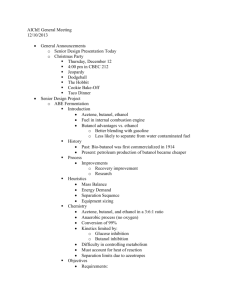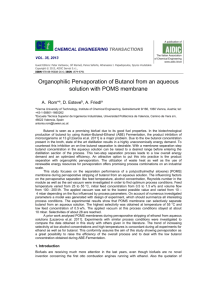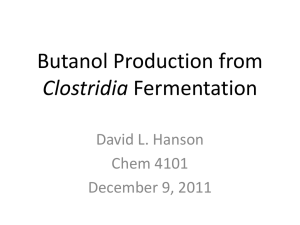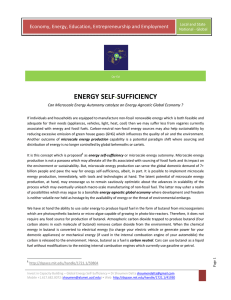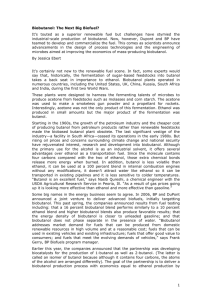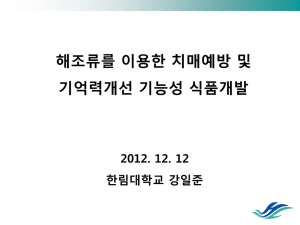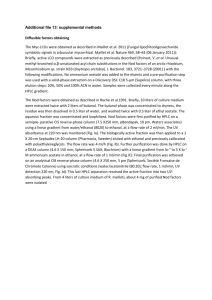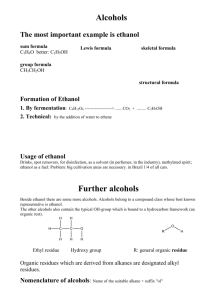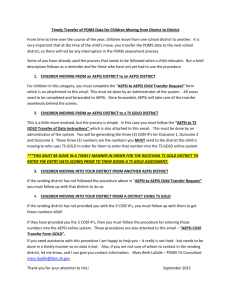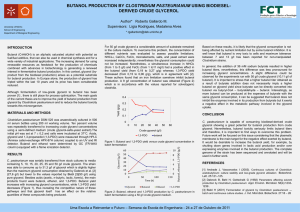Organophilic Pervaporation of Butanol from an aqueous solution
advertisement
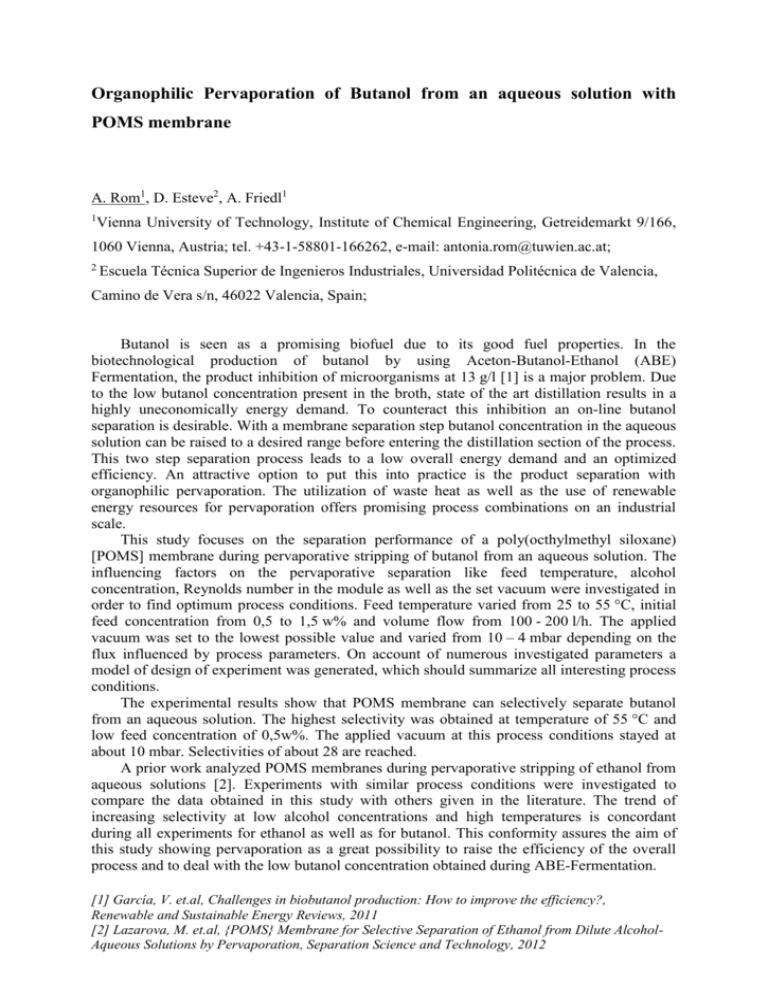
Organophilic Pervaporation of Butanol from an aqueous solution with
POMS membrane
A. Rom1, D. Esteve2, A. Friedl1
1
Vienna University of Technology, Institute of Chemical Engineering, Getreidemarkt 9/166,
1060 Vienna, Austria; tel. +43-1-58801-166262, e-mail: antonia.rom@tuwien.ac.at;
2
Escuela Técnica Superior de Ingenieros Industriales, Universidad Politécnica de Valencia,
Camino de Vera s/n, 46022 Valencia, Spain;
Butanol is seen as a promising biofuel due to its good fuel properties. In the
biotechnological production of butanol by using Aceton-Butanol-Ethanol (ABE)
Fermentation, the product inhibition of microorganisms at 13 g/l [1] is a major problem. Due
to the low butanol concentration present in the broth, state of the art distillation results in a
highly uneconomically energy demand. To counteract this inhibition an on-line butanol
separation is desirable. With a membrane separation step butanol concentration in the aqueous
solution can be raised to a desired range before entering the distillation section of the process.
This two step separation process leads to a low overall energy demand and an optimized
efficiency. An attractive option to put this into practice is the product separation with
organophilic pervaporation. The utilization of waste heat as well as the use of renewable
energy resources for pervaporation offers promising process combinations on an industrial
scale.
This study focuses on the separation performance of a poly(octhylmethyl siloxane)
[POMS] membrane during pervaporative stripping of butanol from an aqueous solution. The
influencing factors on the pervaporative separation like feed temperature, alcohol
concentration, Reynolds number in the module as well as the set vacuum were investigated in
order to find optimum process conditions. Feed temperature varied from 25 to 55 °C, initial
feed concentration from 0,5 to 1,5 w% and volume flow from 100 - 200 l/h. The applied
vacuum was set to the lowest possible value and varied from 10 – 4 mbar depending on the
flux influenced by process parameters. On account of numerous investigated parameters a
model of design of experiment was generated, which should summarize all interesting process
conditions.
The experimental results show that POMS membrane can selectively separate butanol
from an aqueous solution. The highest selectivity was obtained at temperature of 55 °C and
low feed concentration of 0,5w%. The applied vacuum at this process conditions stayed at
about 10 mbar. Selectivities of about 28 are reached.
A prior work analyzed POMS membranes during pervaporative stripping of ethanol from
aqueous solutions [2]. Experiments with similar process conditions were investigated to
compare the data obtained in this study with others given in the literature. The trend of
increasing selectivity at low alcohol concentrations and high temperatures is concordant
during all experiments for ethanol as well as for butanol. This conformity assures the aim of
this study showing pervaporation as a great possibility to raise the efficiency of the overall
process and to deal with the low butanol concentration obtained during ABE-Fermentation.
[1] García, V. et.al, Challenges in biobutanol production: How to improve the efficiency?,
Renewable and Sustainable Energy Reviews, 2011
[2] Lazarova, M. et.al, {POMS} Membrane for Selective Separation of Ethanol from Dilute AlcoholAqueous Solutions by Pervaporation, Separation Science and Technology, 2012
